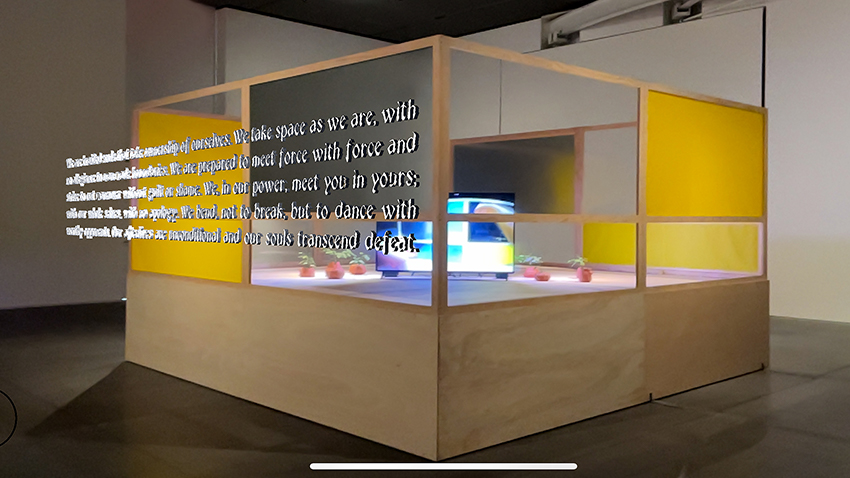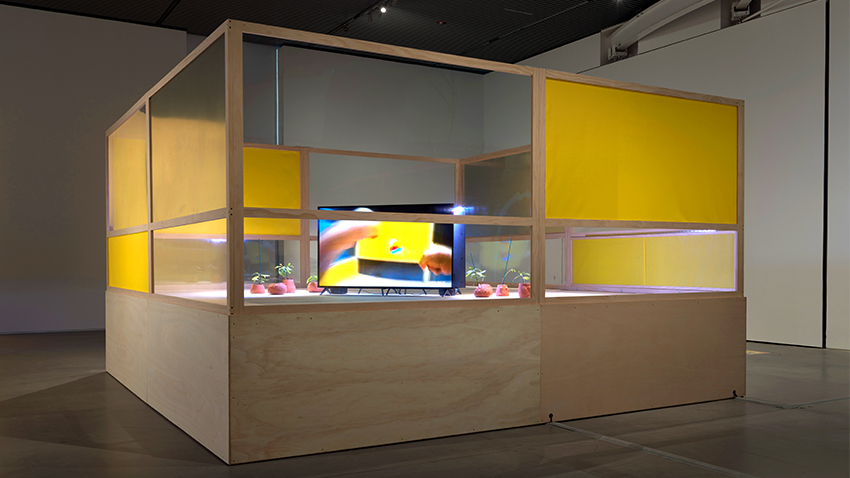




The Headless Headhunt
2021
Polycarbonate acrylic, ballistic textile, wood, metal, red stoneware, strophanthus caudatus (twisted cord flower), LED grow lights, video (7 mins looped, colour, sound), audio, vinyl stickers, augmented reality app
16 x 16 x 9ft
Commissioned by The Shed for Open Call 2021; supported by the Australian Government through the Australia Council for the Arts, its funding and advisory body.
The Headless Headhunt is a performance installation, an act of mourning, and a personal report on losing her mother. In this work, Garcia draws from the Indigenous practice of headhunting from the Philippines with the motivation to process her grief. According to Indigenous Ilongot elders from Northern Luzon, profound rage born from grief can compel one to cut off human heads.
Borrowing the dimensions of a boxing ring, this work serves as an arena to cultivate sources of knowledge and skills called for in a potential headhunting expedition. As research becomes embodied, theories become practice, and training becomes a process of discovery. In translating headhunting customs through her own physical and psychological iterations derived from Filipino Martial Arts (FMA), Garcia draws from various techniques incorporating weaponry (darts and a blowgun) and “open-hand” fighting, as well as esoteric practices, such as orasyon (a mental training tool that takes the form of prayer recited before battle), and botanical traditions of making arrow poison (typically be applied to the tips of darts, arrows, and spears).
As part of a performative embodiment of her grief, the artist documented herself training with a boxing apparatus attached to her head. Using a law enforcement body-camera and green-screen technology, she composits a video of a mantis shrimp, a crustacean that punches its prey, generating a force equivalent to that of a .22 caliber bullet. The installation’s exterior panels consist of bullet-resistant materials providing further physical protection in addition to the spiritual shielding present in the augmented-reality orasyon, which was written in collaboration with the Chrysalis Kali Collective, with whom she trains. Each of their voices echoing in the soundscape composed by A La Una.
In this work, Garcia honours matriarchal loss through the handcoiling of ceramic vessels, inspired by Maitum burial jars, as she reconciles her intertwined personal and political experiences of grief and loss though a headless headhunt. In the return of grief to Indigenous foundations, Garcia proposes that to be “headless” in this sense is to be diasporic, illegible, and uncontained, existing as a future iteration of the past—a living afterlife.
Exhibition History: The Shed (2021)